Porsche PPE Platform: challenging Tesla, leading the luxury electric car market
 AshleyAug 21, 2024, 02:48 PM
AshleyAug 21, 2024, 02:48 PM
The Porsche Taycan is very popular as a luxury model in the pure electric range, and Porsche will certainly not stop at this on the path to electrification. As a brand under Volkswagen, Porsche has a very strong backing, and the group has already had a very large strategic blueprint, unwavering on the path to electrification. Porsche has developed a high-end pure electric car architecture - the PPE platform, in cooperation with Audi. Today, we will analyze this high-end and cost-effective PPE pure electric platform.

The PPE platform is not really big news anymore. Some time ago, Audi launched three platform lines for different product levels. Currently, only the Porsche Taycan and Audi e-tron GT are using the J1 platform, while the MEB hosts the Volkswagen ID series as well as the Audi Q4 e-tron and Q5 e-tron. PPE has been identified as a more luxurious and higher-end position than MEB. The models that can be foreseen to use the PPE platform will include the Macan BEV, Q6 e-tron and A6 e-tron.
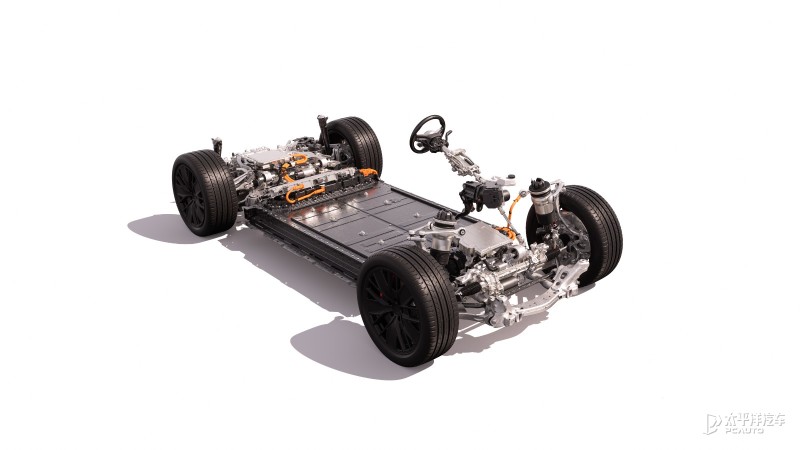
Porsche's first model to use the PPE platform is the Macan BEV. With the best-selling Porsche Taycan, the pure electric Macan will further boost Porsche's sales performance in the pure electric field. Let's take a look at the technical details of the Macan BEV.
PPE Pure Electric Platform
1: Battery
The PPE's battery will integrate the best of the J1 platform and the MEB. It is based on an 800V system and features an 811 ternary lithium cell with a total capacity of about 100kWh. The PPE's battery will adopt Samsung SDI's square cell solution, which is consisted of 12 square battery modules.
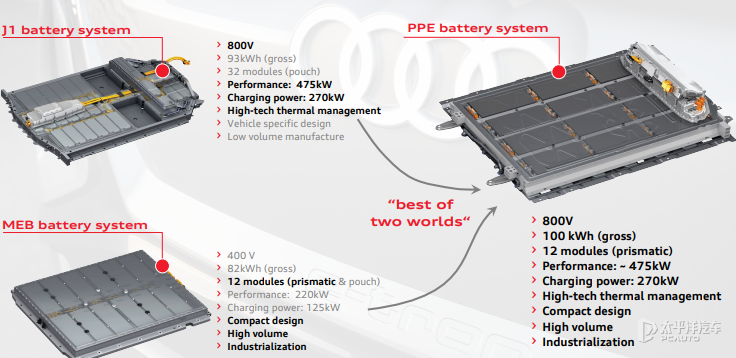
This is a double-row large module form. This module scheme is designed based on square aluminum shell cells, which makes it impossible to achieve soft packing. The structure of the battery pack is left with only the longitudinal and horizontal beams around it. This requires a very high structure strength for the module itself. Its design of removing the bottom box and keeping the module is the exact opposite of the CTP design which keeps the bottom box and removes the module.
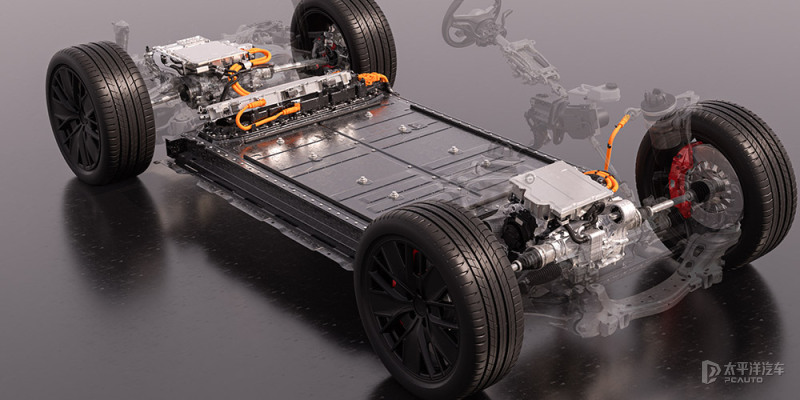
This battery pack design has two features. One is that the temperature control system design has been moved from the bottom plate to the floor of each module, and it no longer has the traditional lower case water cooling plate. The other feature is that many parts of the module are secured with mechanical connections using bolts or screws, unlike the common welding or adhesive bonding,it makes the disassembly of PPE very good and can be easily disassembled to the battery cell level. Compared to Tesla's extremely aggressive integrated design, PPE's battery design is relatively conservative, but it provides higher safety and has an aesthetic sense in engineering.

Thanks to the 800V technology, the charging power of the Porsche Macan BEV will exceed Taycan's 270kW and it can charge from 5% to 80% in less than 25 minutes. It also supports 400V charging. When charging at 800V, the entire battery pack will act as a series unit. When charging at 400V, the high-voltage switch in the battery will automatically switch, dividing the battery into two parts. The rated voltage of the two parts of the battery is 400V, and they are charged in parallel at the same time.
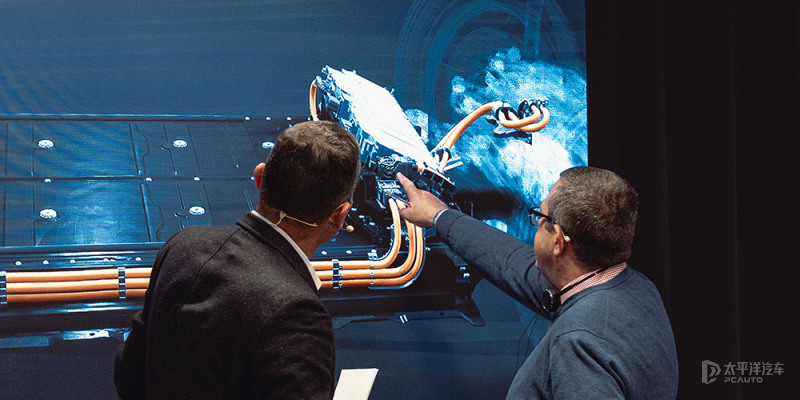
Porsche has applied for a patent for its Integrated Power Box, which combines the on-board AC charger, the high voltage heater and the DC/DC convertor (DC/DC) to save space.
2: Drive System
In the all-electric Porsche Macan, only the latest generation of permanent magnet synchronous motor will be used, with hairpin winding and double V stacked magnet layout. The system output can reach 450 kW, with torque exceeding 1000 N·m.
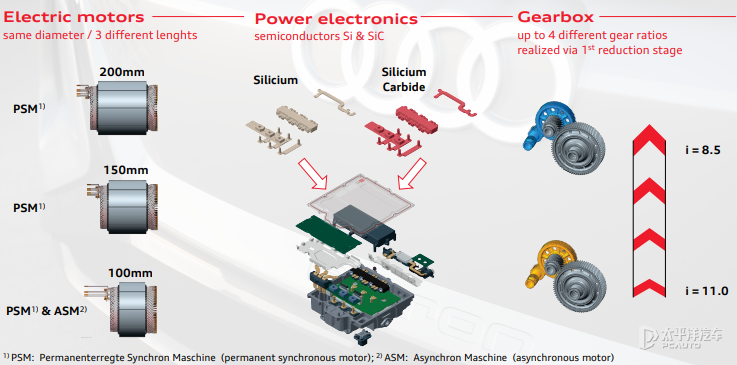
The all-electric Porsche Macan will use a dual motor four-wheel drive system, with a motor arranged on each of the front and rear axles. To optimize efficiency, silicon carbide (SiC) is used in the pulse width inverter (PWR) on the rear axle to replace silicon as the semiconductor material.
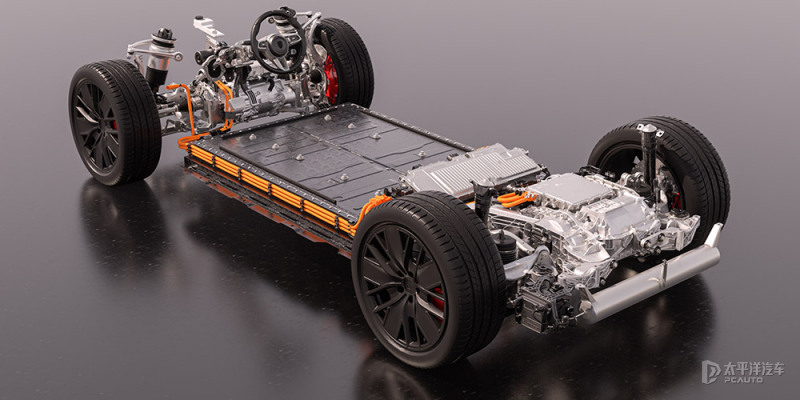
3: Chassis
What makes Porsche a Porsche are its classic driving experience, steering system and chassis quality, which are the brand's trademarks. So how does the all-electric Macan, built using the PPE platform shared with Audi, reflect its unique attributes? The diagram below shows that the main differences in components between the all-electric Porsche Macan and the Audi Q6 e-tron are concentrated in the front and rear axles.
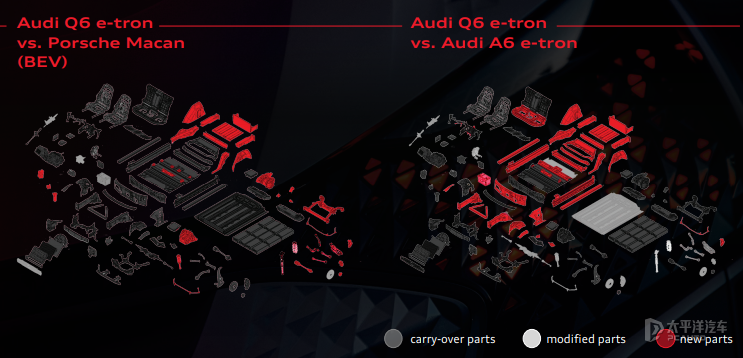
At the front, the all-electric Porsche Macan will have a completely revamped double-wishbone suspension and is equipped with independent strut rods. Porsche has created a unique "high-performance rear axle" for the all-electric Macan, with the motor placed in a particularly rearward position for a front-rear weight balance of 48:52.

The flagship model will come standard with the upgraded version of the Porsche Torque Vectoring System (PTV Plus): This is an electronically controlled differential lock on the rear axle. It adopts independent control strategies for different driving situations to ensure greater traction, driving stability, and lateral dynamics, and performs targeted dynamic braking interventions for steering behavior and precision.
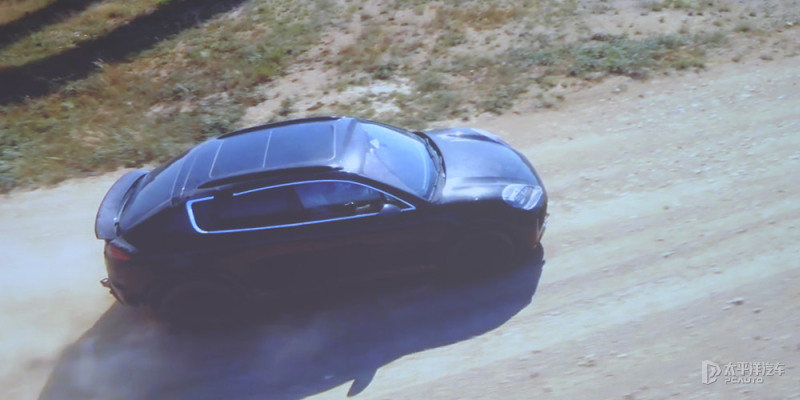
The design of the "High-Performance Rear Axle" allows the Macan to be equipped with rear wheel steering for the first time. At speeds below 80km/h, the direction of the rear wheels is opposite to the front wheels, reducing the wheelbase and the turning radius. At speeds exceeding 80km/h, the direction of the rear wheels is the same as the front wheels, enhancing driving stability. The overall enhancement of rear-wheel steering has increased the flexibility in city traffic and stability and driving accuracy on highways.
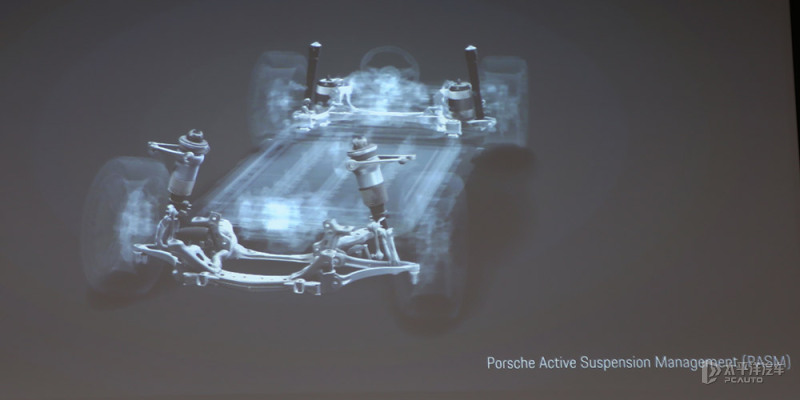
The electronically controlled Porsche Active Suspension Management System (PASM) combined with the air suspension of the all-electric Porsche Macan is equipped with twin-valve shock absorbers. Due to the significantly expanded characteristics of damping and can be independently adjusted, the differences between different driving modes become more apparent, which can balance performance and comfort better. The all-electic Porsche Macan will use mixed tyre widths, and can choose up to 22 inches of large size wheel hubs.
Future of Electric Porsche
1: Is PPE just a transition platform?
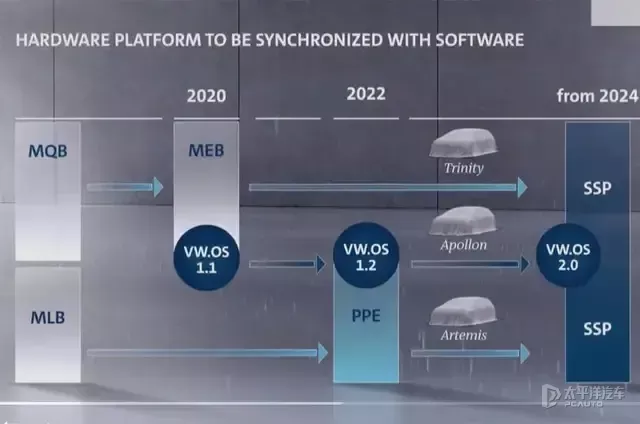
Volkswagen Group's SSP (Scalable Systems Platform) architecture plan, officially announced at the "ACCELERATE" strategy conference, will realize the grand unification within the Volkswagen Group, unified cell size, unified software development and unified electric drive. Under the SSP architecture, many sub-platforms will still be derived, and the plan may include at least three different platforms from SSP 1 to SSP 3. The core idea of the SSP architecture is very similar to GM's Ultium, a platform that can accommodate almost all models, and the standardization of battery cells can significantly reduce production costs.
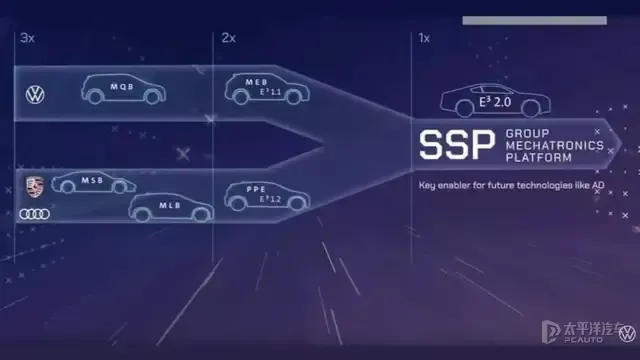
Comparatively, has PPE become an outdated platform even without a single model being officially delivered? Although all technologies become outdated at some point, SSP clearly shows Volkswagen's anxiety. MQB has demonstrated Volkswagen's standard in scalable modularization, but there are many problems in software. The development of electrical and electronic architecture is slow, and it is left behind by a host of new domestic carmakers in intelligent driving and intelligent cockpit. Technically speaking, PPE is indeed more like an upgraded version of MQB or a mass-production platform of J1. In fact, PPE comprehends the essence of Volkswagen's current pure electric platform. In the future, SSP will mainly unify atomic level in scalable modularization, especially the mass production of battery cells, as this is the main factor affecting costs. As for what the E3 2.0 will look like in the electronic and electrical architecture software, and how much it can improve, no one can say.
2: Porsche has always been Porsche
Porsche plans to have 80% of its models be pure electric vehicles by 2030. While modular and platform production is important, Porsche will always be Porsche, and its inherent racing genes compel it to make a mark on the track. The Mission R, which has made several appearances, is a product of Porsche flexing its muscles. As a concept car that allows Porsche to demonstrate its electric power, it shows Porsche's understanding of electric GT racing and events.
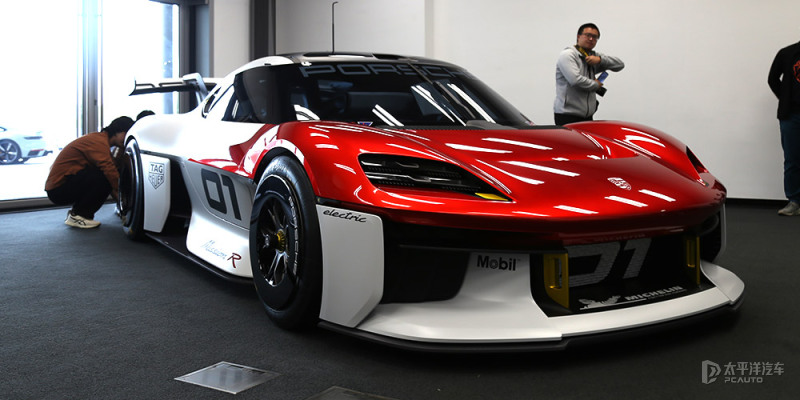
The ultimate smooth and characteristic Porsche exterior design
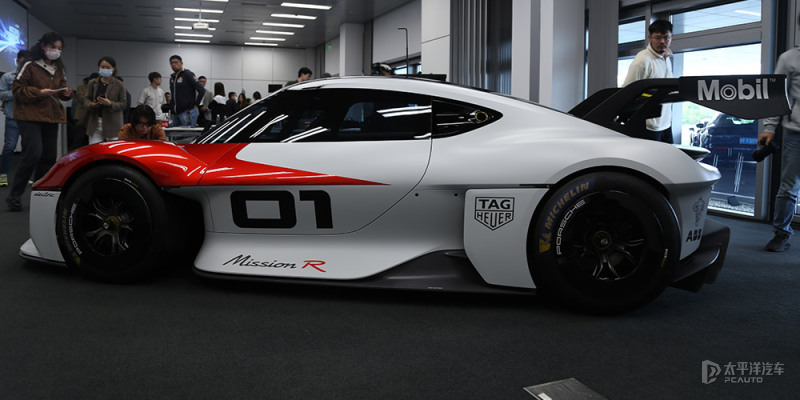
Ultimate aerodynamic design
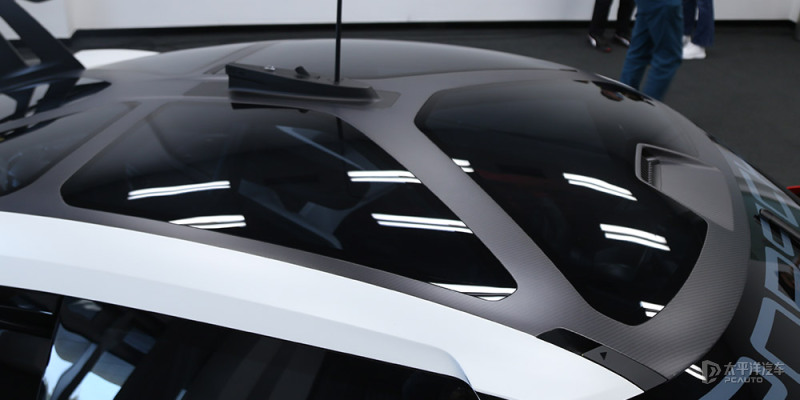
Exposed full carbon fiber frame

Special woven fabric cage seats provide passive cooling effect
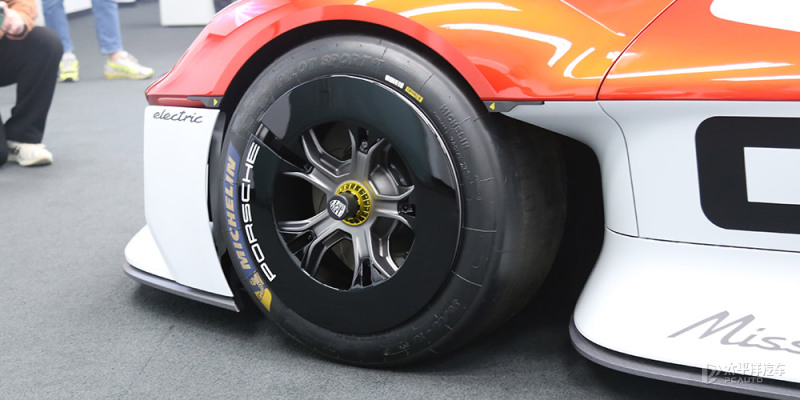
Collaboration with Michelin 53% of tires made from recyclable materials
There are two cameras in the car, one fixed camera and one on rails. With the live button on the control panel, live broadcasting or sharing can be done online in real time. The strong internet attributes represent the Porsche's understanding of future electric GT races.
3: GT4 e-Performance
The 718 Cayman GT4 e-Performance is a test prototype developed based on the Mission R, it represents Porsche's cutting-edge electric vehicle technology. And it has the same performance as a GT3 CUP model. In addition, it adopts a 900 V architecture, its maximum performance reaches 906V, and it has a high-performance output. The motor and power battery technology are all derived from Mission R.
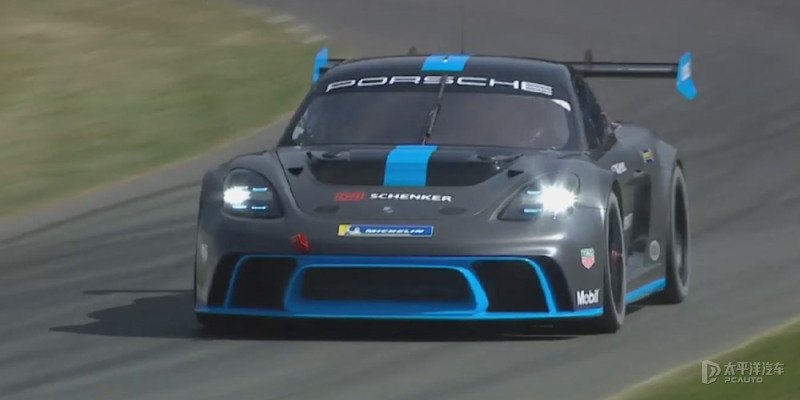
The maximum output power of the GT4 e-Performance can reach 800kW (1088PS), and it can accelerate from 0-200km/h in just 5.6s. It can also drive continuously for 30 minutes at a power of 450kW (612 PS). The stable high-performance output throughout the whole journey benefits from direct oil cooling technology. The powerful direct oil coolers use a cooling oil provided by Mobil, which flows through the inside of the batteries.
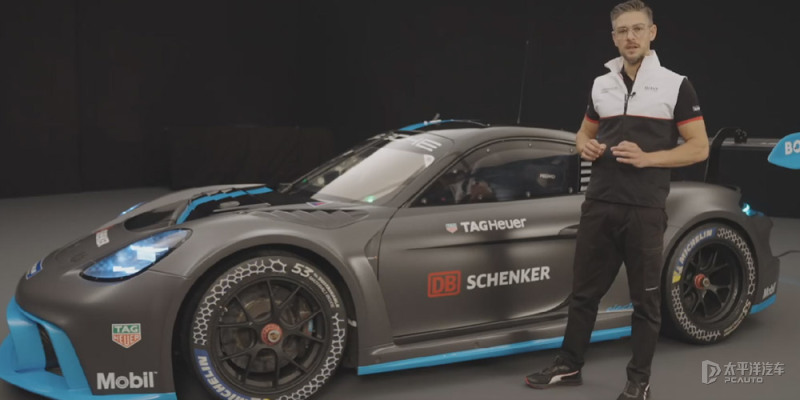
The battery of GT4 e-Performance is designed with a three-section layout, evenly distributed in the front, middle and rear of the chassis. The battery capacity is 80kWh, the application of 900V technology can charge the battery from 5% to 80% in 15 minutes, and the energy recovery rate is as high as 50%.
Editor's review
From Porsche's future electrification roadmap we can clearly found that with the application of the electric platform, subsequent models will lose some appeal due to platform modularization, so how to keep Porsche always popular becomes a question. But the good thing is that we have seen Porsche's efforts from the sophisticated perspective. We hope that it will not only stop at showing off the muscles, but should launch products from the race to the civilian use, rather than reaching out to the group. Volkswagen Audi needs scale to guarantee profit margins, but Porsche don't need it, right?
If any infringement occurs, please contact us for deletion
Trending News

2026 Toyota Hilux Travo released, the brand-new exterior and interior are highly anticipated
If you're considering buying a Hilux, honestly, the comprehensive innovations in the ninth generation are worth waiting for. While the current model might still have some advantages in terms of reliability and price, the new model offers significant changes in terms of exterior and interior luxury, tech features, and powertrain options.

Perodua Traz VS Ativa, which one is more worth buying?
Traz, as a newly launched mid-sized SUV, offers more spacious room and mainstream power compared to small SUVs, but its pricing appears slightly higher than that of Ativa. Ativa, on the other hand, is Perodua's long-time best-selling small SUV with more affordable pricing and a balanced combination of power and tech features.

Which one is better, Honda City or Toyota Vios?
When choosing a compact sedan, Honda City and Toyota Vios are often two options that make people weigh repeatedly. You might be attracted to the dynamic design of the Vios but also be captivated by the City.

Perodua Myvi and Bezza may undergo major upgrades in 2026
After the update, the Bezza will no longer be just a low-cost alternative but a core model in the Perodua system with greater market competitiveness and brand premium potential. The upgrade of the Myvi is not to be unconventional but to strengthen the brand and market, ensuring that the Myvi continues to maintain its irreplaceable position in the new round of product competition.

Perodua Traz VS Toyota Yaris Cross, where does the Traz fall short?
Before the official launch of the Perodua Traz, market expectations were actually very high because it shares the same DNGA platform as the Toyota Yaris Cross. However, sharing the same platform does not equate to the same experience, and the Traz's final performance has indeed been disappointing. Perhaps it is precisely because of the delayed launch that it has almost no competitiveness in the current competitive environment.
Popular Cars
Model Year
Car Compare
Car Photo

